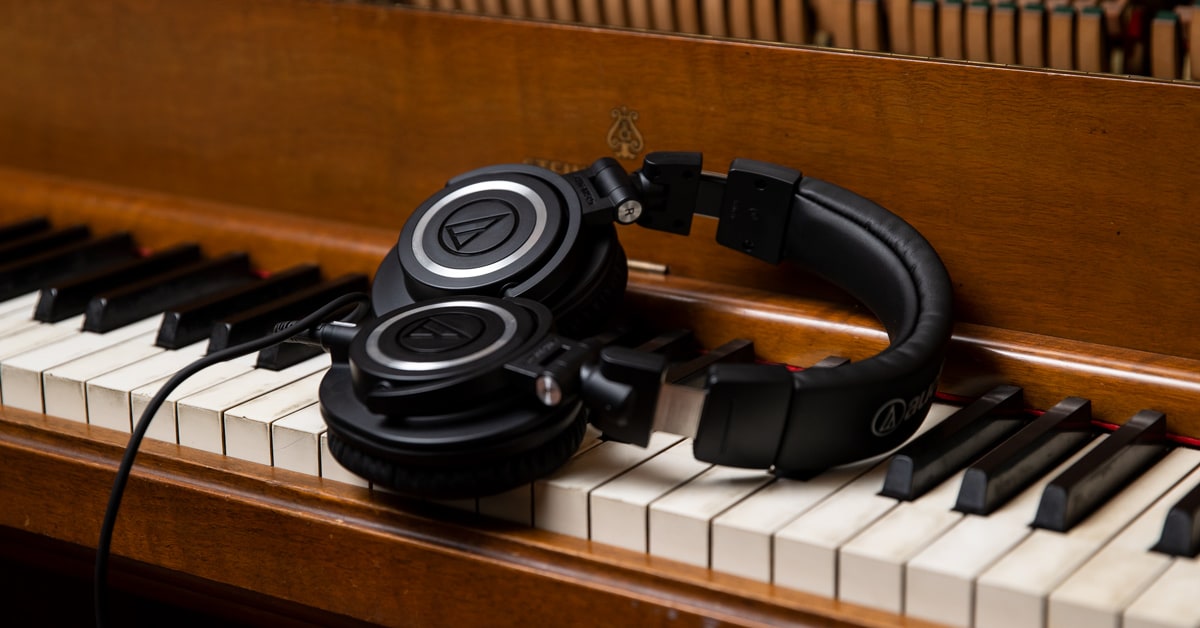The most effective communicators know the first step to getting their message across is to listen. Constructive conversation isn’t one person talking—it’s both parties seeking to understand the other’s needs and desires. Music is its own form of communication, and the gear we use to create has a lot to say. Musician/composer Tyler Gilmore, aka BlankFor.ms, is ready to listen.
Armed with an ever-evolving setup of lo-fi tinker tools—consisting of hand-manipulated cassette tape, analog synths and effects pedals—BlankFor.ms crafts dreamy, nostalgia-inducing symphonies full of rich warmth and smearing textures.
We had the chance to talk to BlankFor.ms about his unique setup, his favorite pieces of gear, how he uses them and all of the happy accidents he encounters along the way.
“Everything is connected. It’s a complex dance.”
You’ve described the imperfections of the tape loop as a collaborator. How do the imperfections and physical limitations of tape guide your process?
Working with tape loops forces you to give up control, to embrace unpredictability. You can finesse it, but you can’t really control it. The rhythm, length and tone of what you create is largely up to the physical aspects of the loop itself, which can be humbling and inspiring all at once.
There’s, of course, the simple fact that when sound is converted to magnetism it takes on a certain indescribable quality. But more specifically, tape tends to affect pitch while filtering out some high frequencies and adding a bit of noise. The real key to its magic is how those three interact. They aren’t stable and they aren’t random. One affects the other—when the pitch moves, it affects the filtering, which affects the noise, which affects the pitch, which affects etc.—everything is connected. It’s a complex dance.
How would you compare that to working solely in the digital realm?
To my ears, music is a lot like cooking in that it’s all about gathering high-quality ingredients, like tape, and creating something great without messing up what makes the ingredients themselves special. DAWs can be incredible as a single ingredient. The issue is that they often pretend to be all the ingredients. The meal, for me, comes out better when there’s a variety of things going in.
You’ve modded many of your tape machines and Walkman players. What do those mods enable you to do that you couldn’t do with a stock machine?
That thing that tape does with pitch is, to my ears, the most magical thing about it. All of my modded machines are based around pitch. One of them is simply a Walkman with a pitch mod for a wide range of speeds. The other is an Onde Magnétique OM-1, which essentially turns tape speed into a playable instrument. The melody on “Before You Were” was made with this.
What are some key pieces of gear that have expanded the way you use other components of your setup?
Having an interface you love and trust is huge. I use an Apogee Quartet, and while my workflow might benefit from expanding to something bigger, I’ve just always loved the way it sounds. For creating full tracks, sample packs, remixes, etc., Ableton Live is the heart of my studio. My music is so texture based, and getting the most out of those textural ingredients requires EQ and compression skills. I’ve built a few Ableton Live racks with EQ, saturation, compression and limiting organized into a signal chain that I like to work with. Everything passes through these racks—sometimes multiple times by the end of the mixing process.
What are some of the effects pedals and processors you use to finesse and transform your source sounds?
I use tape and effects units in many stages of the process—and not really in a predictable way. Sometimes I’ll record something to the DAW, then re-record it through tape, and then pass it through a delay or reverb unit and back into the DAW. Or, I’ll send a synth directly through an effects pedal and record it onto tape, and then finally record it to a DAW. The synth, tape, effects chain can go in so many directions.
My favorite reverb is the Source Audio Ventris. Its high-quality DSP makes for lush, huge sounding resonance with a lot of flexibility. For delay, I love the Strymon Magneto and Death By Audio Echo Dream 2. The Chase Bliss Audio MOOD and Retroactive Pedals Dot Chaser are my favorites for unpredictable textural additions.
And, of course, I use the mixer portions of my tape machines as saturation and distortion units. There’s something so lovely about how they break up.
You’ve stated that sometimes you can’t quite play what you mean to, but still like the results. For you, what is the dividing line between experimentation and the end result?
While creating, I like to make space for a kind of improvisation where I can turn off the left side of my brain and go fully abstract. It requires me to turn off the judgmental portion of the brain for a moment and just see where things go. If I can stay present enough to listen, often something good will eventually happen, and I’ll keep that moment as part of the piece. I’m always recording during these sessions.
Is the process mostly experimentation, or do you often have a clear vision of the sounds you’re looking for?
For full tracks, I’ll often create the harmony and melody first, and then build the textural elements around that. It acts as an anchor for all of the timbral exploration. For Instagram and YouTube posts, I’ll sometimes put a few pieces of gear out on the table and simply let my subconscious take over.
What are some happy accidents that have pushed you in unexpected directions?
The Chase Bliss Audio MOOD is a happy accident machine, just about anytime I use it, something magical occurs. Similarly, tape loops force you into accepting beneficial accidents as a given. Nearly every loop is a collaboration with fate. My recent remix of The Cinematic Orchestra’s “Wait For Now” began as an improvised set of chords, and it only found its way when I recorded them onto tape and began adjusting the tape speed.
Learn more and get hands on with BlankFor.ms's latest, Blur-Tones & Chords sample pack.










